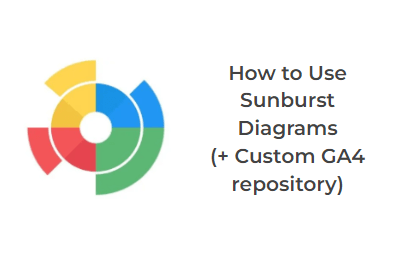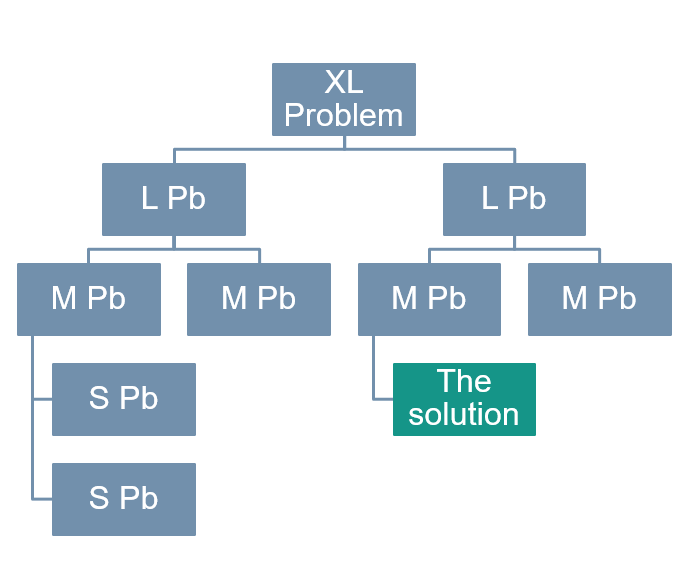When you’re looking at your business performance, you need to know your market equation to decompose all the effects that results of the raise or the fall of your activity and be able to understand where you should act to improve.
The simplest example of a market equation will be your company revenue, which is just an amount of money that results from a number of items sold at a certain price, but this could be completed by numerous elements as for example number of distributing points or number of items available at the distributing point…and this could be done for all type of performance, your number of incidents, your conversion rate… A market equation could be really powerful to analyse a performance and properly split the reason of your success or your fall but should also follow some specific rules.
1. What is a market equation?
A market equation, which could also be called “indicators relation”, is the composition of a performance indicator. Using mathematical words this could be written as:

The beauty of writing it like this is that it allows you to translate all your secondary performance indicators into the real Key Performance indicators that actually matters, and when taking decisions based on business intelligence, avoid wasting time on things that actually don’t matter.
Now, the good news is that it’s generally not really hard to write down this market equation when you know your business: the function “f” is usually a multiplication and the Performance Indicators are usually things you’re already following, but in separated views.
The next chapters of this article goes a bit more into the details of simple multiplicative/ funnel approach but happy to chat about more complex examples.
2. What is the purpose of building a market equation?
Simplistic example
Using the same example as in the introduction of the article, here is a simplistic retail example: As a retailer I want to understand my Revenue. So, my main KPI is Revenue. And this could be split as:

That makes a lot of sense, because then I have two underlying performance indicators (PI) that actually helps me split the different effect behind what I observe on my main KPI Revenue. First underlying PI is #ItemsSold (the number of products I sell), and the other is Revenue/ #ItemsSold, which is basically my unit price.
Why do I want to split those? Well basically because it’s not the same team in charge of volumes and the one in charge of pricing. So, in order to be able to identify where I need to improve, I need to split those two effects.
Break down your business effects
Every business has a revenue composed by a specific series of steps and the same revenue could be build using different breakdown.
As for example, a restaurant could be a number of meals multiply by an average price, you will just follow 2 effects. But for example, if you add some tables in your restaurant, it will be hard to compare your revenue between two period of time if you don’t follow the same amount of seat available in your restaurant. And you will have the same issue if you accelerate your service and try to serve 3 seats per meal instead of 2. Just using clients and price won’t allow you to follow all the underlying effects of your business. Using a market equation will allow you to separately compare your performance between two periods of time all things being equal.
If we are now talking about industry, the number of incidents could also be the result of a market equation. If you follow the number of incidents coming from your industrial machine on a weekly basis, you won’t be able to compare your incidents if you doubled the number of machine in your scope. We will need to split your performance at least in two: number of machines and number of incidents.
This will be true for almost every activity.
3. A conversion funnel is also a market equation
An eCommerce website will follow his conversion funnel to understand his performance. This funnel will have the exact same composition and rules as a normal market equation.

The website manager will measure the volume of users coming into the website, the number of sessions, the number of users going into a product page, the number of users going in the checkout page and finally the conversion of that checkout into a purchase . As a website owner, you all know the steps of your website and are used to measure the conversion at each step of the funnel in order to give mitigation actions to the right people. As for example, the volume of users going in your website is the responsibility of the acquisition manager, some other part of the funnel could be the responsibility of the conversion team, UX Team, marketing team, basket team, … or even a mix of responsibility.
In a market equation format, this could give the simple equation below, which could be completed by any other useful steps of your conversion funnel.

If we start exploring this equation, we could follow the conversion at each step of the funnel.
- #Users: Volume effect – how many people are visiting my website?
- #Product page visited/ #User: Product page conversion, ratio of people going from the landing page to the product page.
- …on that users on the product page how many went on the basket page (step 3) and finally regarding the people that did all this way to the basket page how many really buy a product (step 4).
I intentionally stopped the market equation at the volume of payments step, to play with you using this equation.
A number of payments is an interesting indicator, but you might as well want to monitor the “revenue generated” or even the “conversion rate” or the “average basket”… using the same data and just playing with the ratio of our equation.
Revenue generated
Let’s now play with this equation: what should be added into this equation to get the market equation that will give you the revenue?
You get it? Quite simple, you should just complete this equation by adding the total amount of revenue generated by this user.

You can simplify this equation to make sure you are measuring the right indicator:

Average basket
This one is more complicated, because it’s not a simple indicator, it’s a ratio (€/user) composed of 2 indicators. to get the average basket we need to change the existing equation. We will need to remove the volume effect, the first step. Why? This is because an average basket is considering the average behavior of your users not the sum of all the users. Doing that, will allow us to have our ratio.

Conversion rate
You now should be able to do this exercise on your own. As a starting point you need to understand the indicator. What is the unit of this indicator? A conversion rate is the percentage of visitors to your website that complete a desired goal (a conversion) out of the total number of visitors. In our case it will be a Number of visitors that complete a purchase out of the total number of visitors in our website.
Using our equation, we will have to remove the volume effect (#Users) and remove the “Revenue”:
![]()
![]()
You are now familiar with the concept of the market equation and the adaptation you can do to a market equation to get the proper indicator. That say, you are not very advanced to do it on your own with your activity and your real data.
4. Analyse your performance with a tool
How Datama helps to analyse your performance
At Datama we build smart algorithms that analyse business performance, and our tool Datama COMPARE is doing market equation calculation and even more.
The best way to analyse a market equation is to display a waterfall. Same graph as in part 3 below is an example of a waterfall graphs coming from Datama COMPARE and explaining the performance of an eCommerce website between 2 periods of time.

I don’t know if you have properly observed the graph, but each step has been converted in the targeted indicator, Revenue in that case. Instead of comparing different type of things, Datama helps you to directly affect an impact using the same unit on each step.
To go further!
It’s interesting to compare the impact of each step, but it will be even more interesting to know what’s driving your performance to raise or to fall. And that’s where Datama COMPARE become really powerful.

In that case, with data coming from Google Analytics, Datama will help you understand which levers to activate to boost your growth.
Get inspired
Datama Demo can help you get idea of market equation you may want to build.
Just look at demo sources, and related demo use cases you get an idea of how it could look.
And don’t hesitate to contact our Team, we will be more than happy to help on your project, even going in much more complex examples than what you have above.










